Romagna, with its green lands and hills silhouetted against the sea, is a region that tells a story of great dynasties, art, power and battles. Among the most famous and powerful families that have marked the history of this land are the Malatesta. Over the centuries, the Malatesta left an indelible mark on Romagna, with a network of castles, fortresses, churches and monuments that tell of their rise, power and decline.
This dynasty dominated several cities and territories between the 13th and 16th centuries, with particular concentration in the area of Rimini, Cesena, Verucchio, and along the Marecchia Valley, leaving future generations a vast legacy of historical monuments, each representing a part of their history. By walking in the footsteps of the Malatesta family, today it is possible to relive the magnificence of a lordship that not only wielded strong military power but also contributed to the greatness of the Italian Renaissance.
The origins of the Malatesta family date back to the 12th century, with the first historical documents attesting to their settlement in the Marecchia Valley, between Pennabilli and Verucchio. The family became linked to the most powerful families in Romagna and, although they had no official noble title, they gained power through shrewd political alliances, wars and strategic marriages.
In 1239, Malatesta dalla Penna became podestà of Rimini, beginning the Malatesta dynasty that, over the centuries, gained great influence over the entire region. Sigismondo Pandolfo Malatesta, one of the most famous members of the family, is remembered as a great leader and patron, who transformed Rimini into one of the most important cultural centers of Renaissance Italy. Under his rule, historic monuments were commissioned, such as the Malatesta Temple, which still represent one of the peaks of Renaissance architecture.
The itinerary to discover the Malatesta in Romagna winds through 18 places that hold the memory of this great family, places that tell stories of battles, intrigue and splendor. Every castle, every fortress, every abbey preserves traces of their greatness.
You can begin by starting at the Rocca di Verucchio, the birthplace of the Malatesta dynasty (Malatesta da Verucchio, Dante’s “Mastin Vecchio” who conquered Rimini in 1295, was born here), also famous for being mentioned in Dante’s Divine Comedy. The Mastio Tower offers a spectacular view of the Marecchia Valley. Its strategic location made it a defensive bulwark against enemies, particularly the Montefeltros of Urbino. The castle was originally built by the Malatesta family in 1197, but it was in the 14th century that Sigismondo Pandolfo Malatesta expanded and strengthened the structure. The fortress is an extraordinary example of medieval architecture, with its imposing towers, surrounding walls and keep, from which an incredible panorama can be admired. In 1462, the fortress was besieged and conquered by Federico da Montefeltro, marking the end of Malatesta rule over the city. However, after the death of Sigismondo Pandolfo, the fortress again came under Malatesta control. Today the fortress is a fascinating place to visit, with its historic rooms and inner courtyard, which also hosts exhibitions and cultural events. The Keep Tower, which offers a panoramic view of the entire valley, is one of the most spectacular features of this castle. The site is also famous for the Malatesta family tree, which is kept inside the fortress.
Moving on, Montebello Castle attracts visitors not only for its scenic location, but also for the legend of Azzurrina’s ghost, which still fascinates those who cross its ancient walls. But beyond the legend, it is one of the most fascinating castles in Romagna and a symbol of Malatesta power. Situated at an altitude of 436 meters, it dominates the Marecchia and Uso Valleys, guarding the road that connects the territories of the Montefeltro and Tuscany. Its history dates back to the 3rd century AD, when a quadrangular Roman tower was erected. The early medieval settlement consecrated the site as Mons Belli, “mount of war,” and in 1186 Giovanni Malatesta, son of the progenitor Mastin Vecchio, acquired the fiefdom. The castle was greatly transformed by the Malatesta: the surrounding walls were completed, new towers and patrol walkways were erected, to adapt it to the needs of defense. The castle also became a noble residence, a symbol of the family’s power and prosperity.
A few kilometers away, the Castle of Santarcangelo di Romagna, with its mighty keep, testifies to the crucial role of this fortress in the struggles between the Malatesta and their rivals, the Montefeltro. The fortress of Santarcangelo stands on Mons Iovis, and has witnessed numerous historical passages. As early as the 9th century AD, the Castrum Sancti Arcangeli was a strategic fortification, but it was under the Malatesta that the castle attained its present form. Starting in 1386, under Carlo Malatesta, the keep, one of the tallest in Italy, was erected. Under Sigismondo Pandolfo, the castle was further fortified, renovated and enlarged to resist the attacks of Federico da Montefeltro. The castle was besieged several times, first by Federico da Montefeltro in 1462, then by Cesare Borgia in 1498. Each battle left marks in its walls and buildings. The fortification is in an excellent state of preservation today, and a visit to it offers an ideal cue for understanding the power dynamics that marked Romagna in centuries past.
Not to be missed is a visit to Pennabilli, a small village located in the heart of the Valmarecchia valley, surrounded by hills and mountains that offer extraordinary views of Romagna and the Marches. The town is famous for its ancient history, which dates back to the Middle Ages, when it was founded by the Malatesta family. The earliest traces of Pennabilli’s fortification date back to the 11th century, when Giovanni della Penna, a descendant of the Carpegna family, built the castle and began the Malatesta seigniory. Castello della Penna and Rocca di Billi, originally separate, were unified in 1350 into a single village. Tradition has it that the Malatesta had strong ties to the area, and over the centuries the town was the subject of contention between several dynasties, including the Montefeltro and the Medici. During the period of Malatesta rule, Pennabilli became a town of great strategic importance, and its defensive walls were enlarged and strengthened. In 1498, Pennabilli came under the control of the Montefeltro, who built the defensive walls that are still visible today. In 1518, Pope Leo X gave Pennabilli the title of city, marking the end of Malatesta rule.
We then push on to San Leo: the Rocca di San Leo, with its vertiginous position on a spur of limestone rock, is one of the most extraordinary and strategic places in Romagna. Its history dates back to Roman times, but it was in the 14th century that it was transformed into a defensive fortification. It was disputed for more than a century between the Malatesta and Montefeltro families, and its dominant position made it a key target for both lordships. In 1441, Federico da Montefeltro commissioned architect Francesco di Giorgio Martini to modernize the fortress’ defenses, adapting them to firearms. With the death of Pope Alexander VI, Cesare Borgia took possession of the fortress in 1502, but upon Borgia’s death, the fortress returned to Montefeltro control. Today the fortress is famous for its historical charm and for the panoramic view it offers of the Marecchia Valley and surrounding valleys. It is also a place of remembrance, having hosted Risorgimento patriots such as Felice Orsini. And even after the Unification of Italy, the fortress continued to be a prison, a function it maintained until 1906.
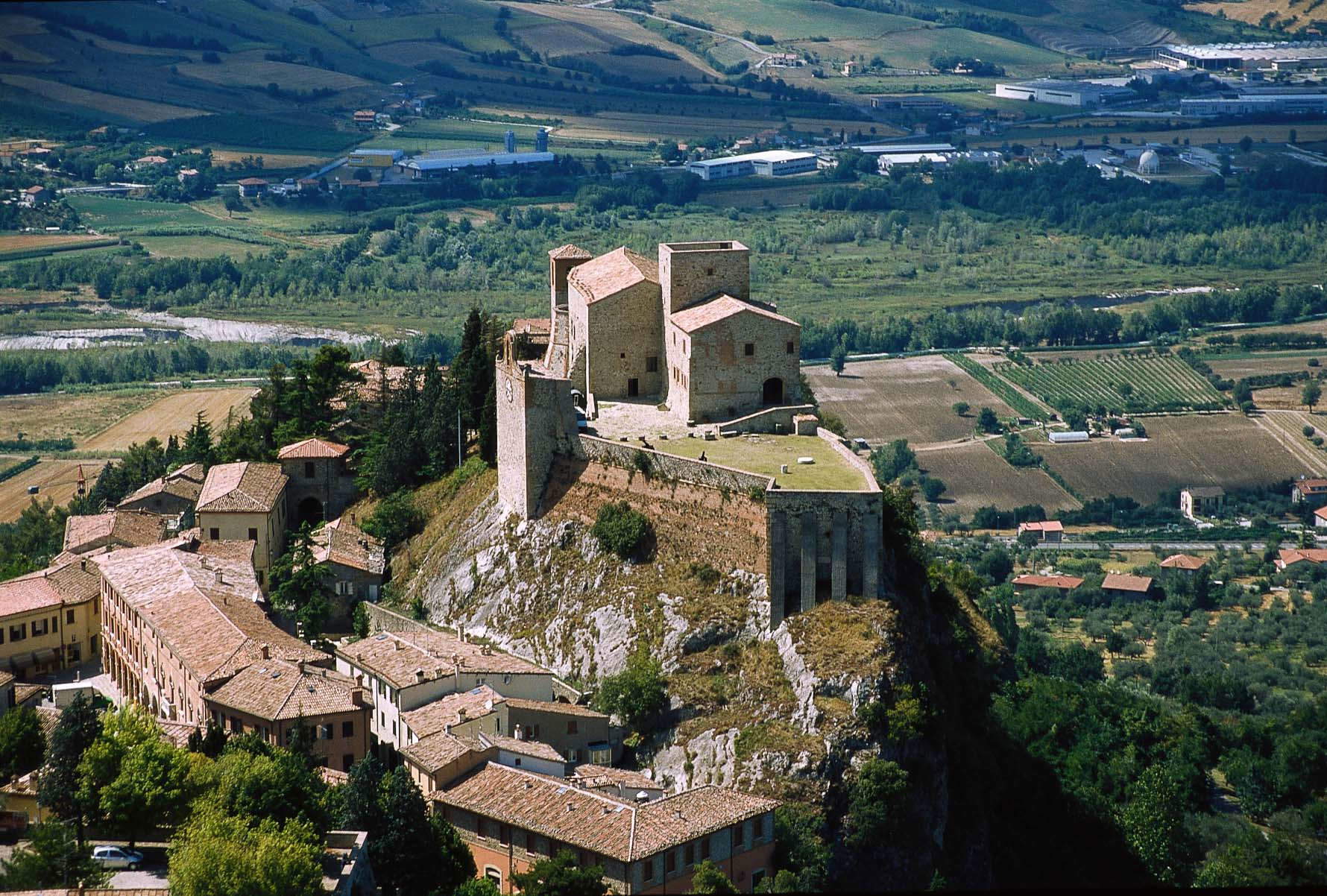
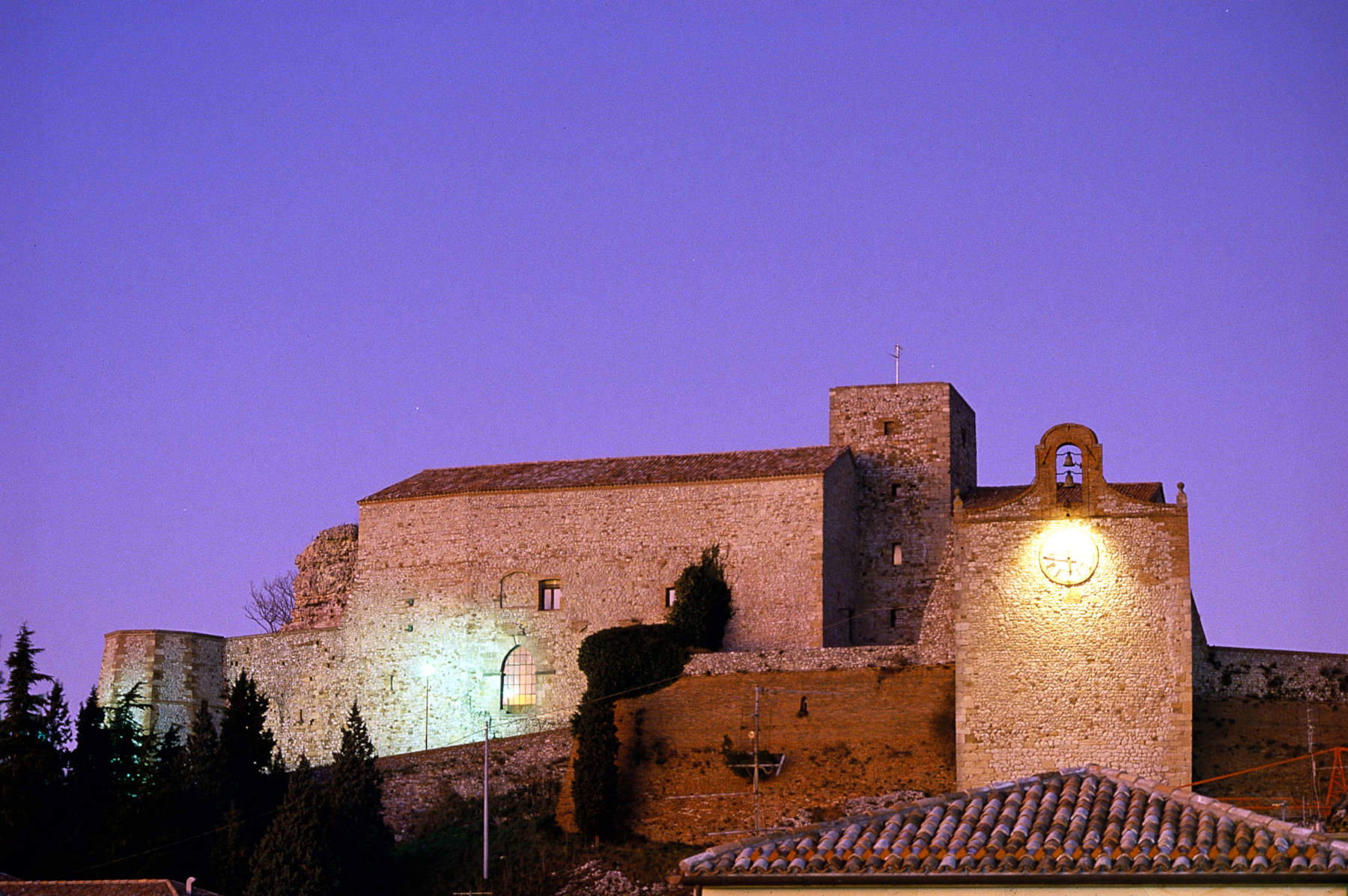
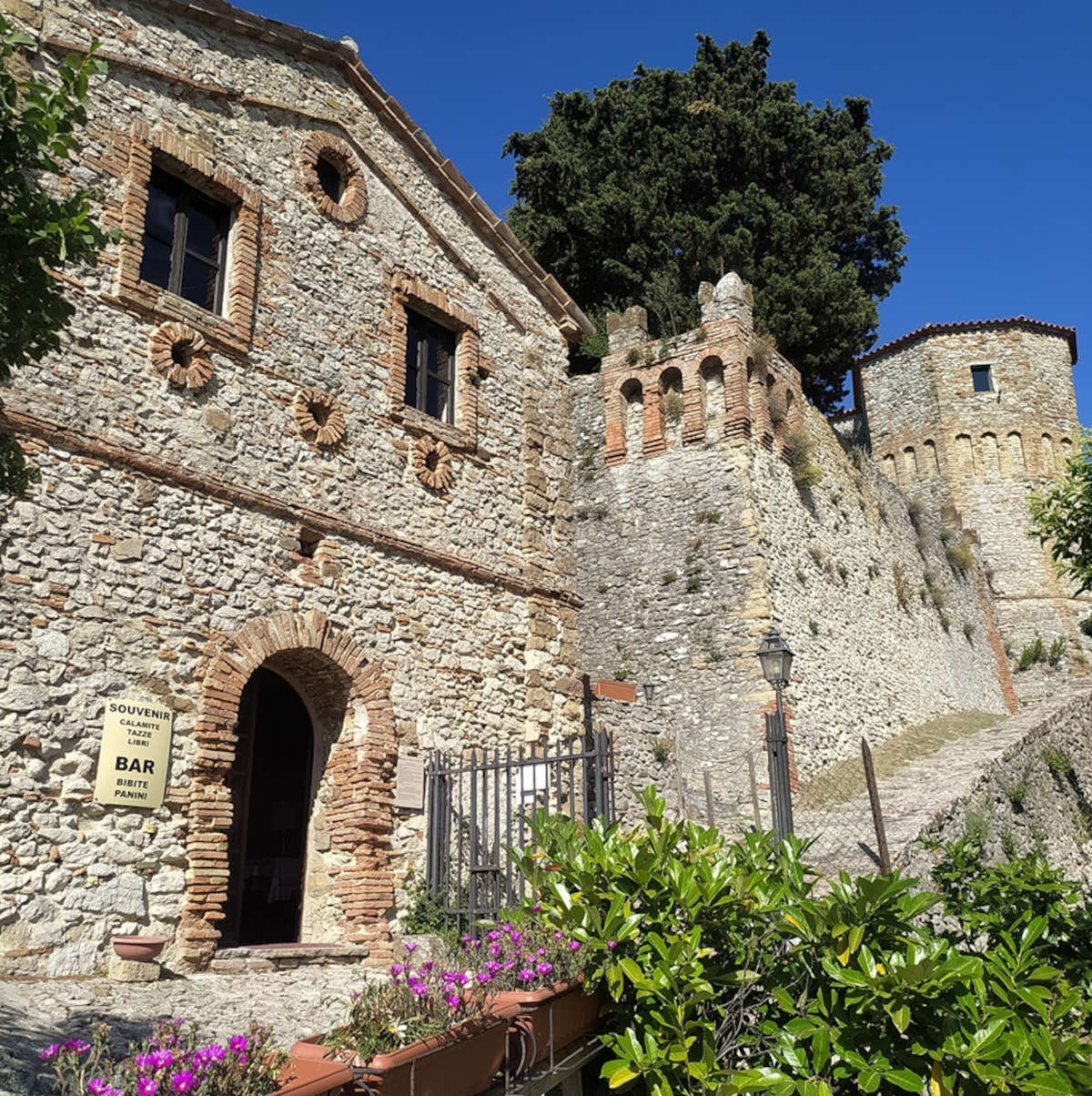
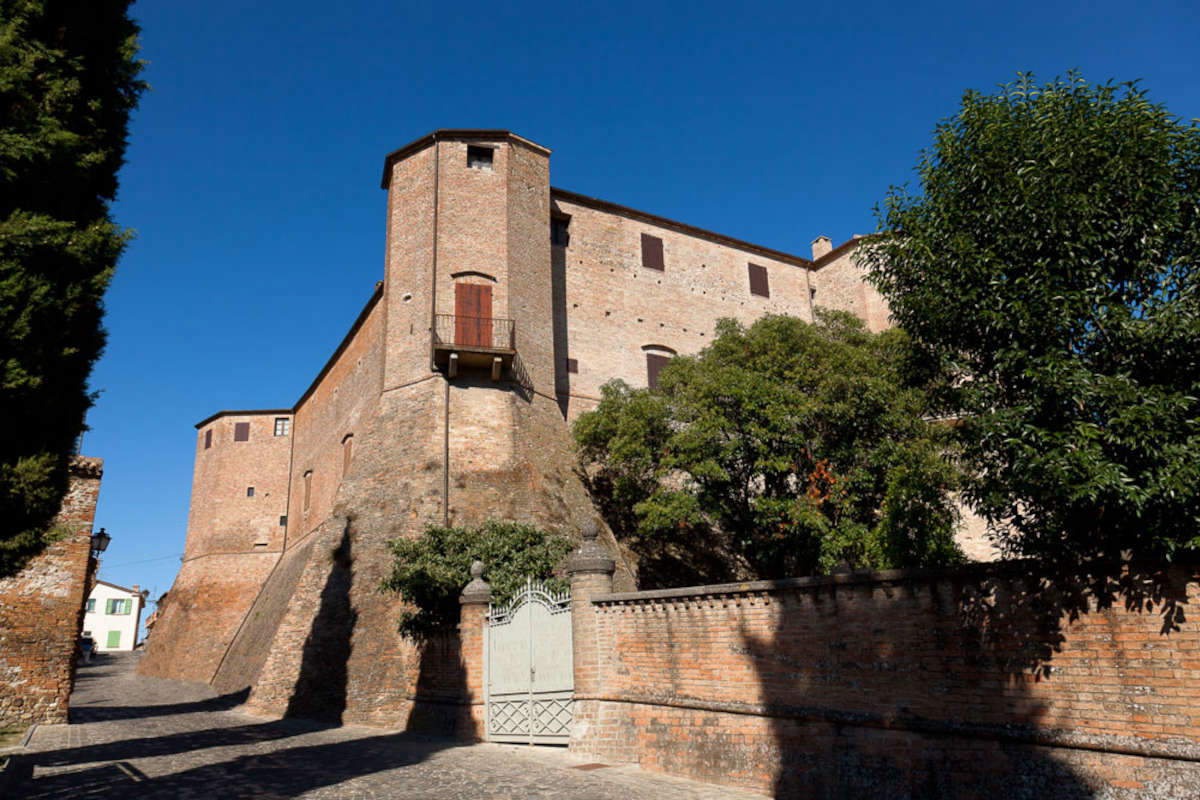
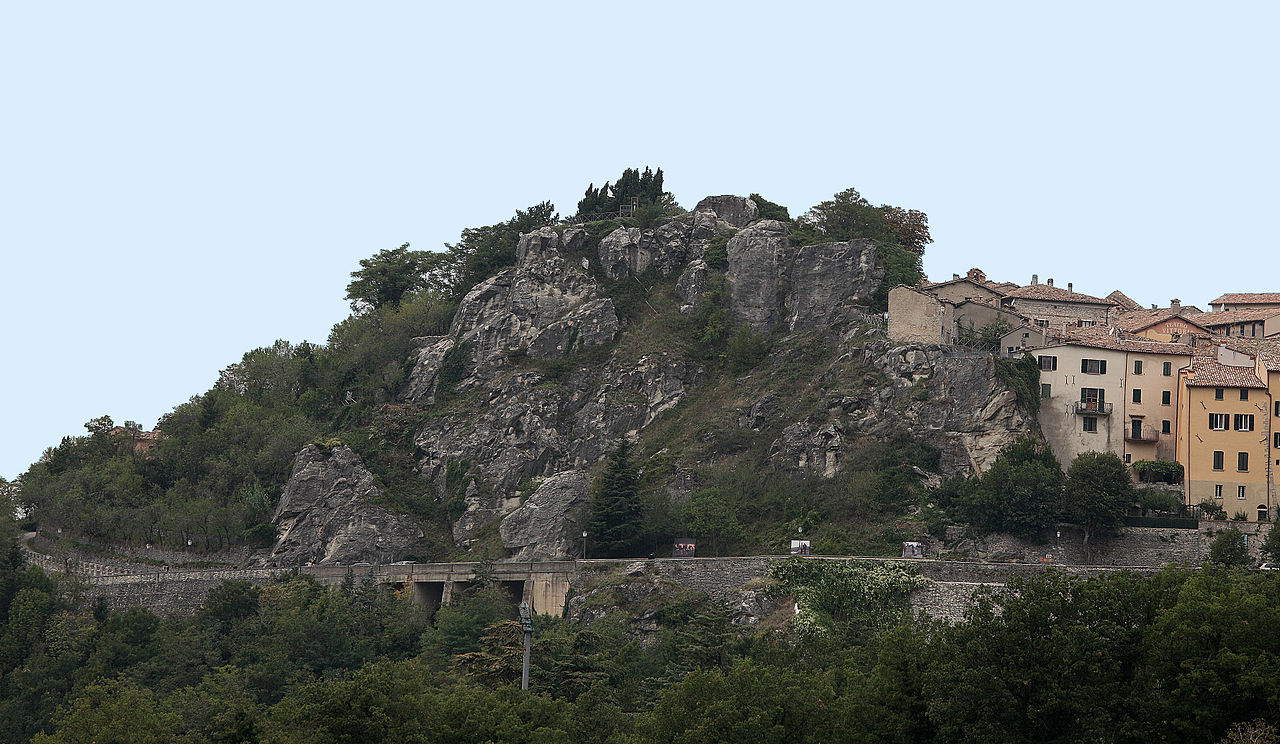
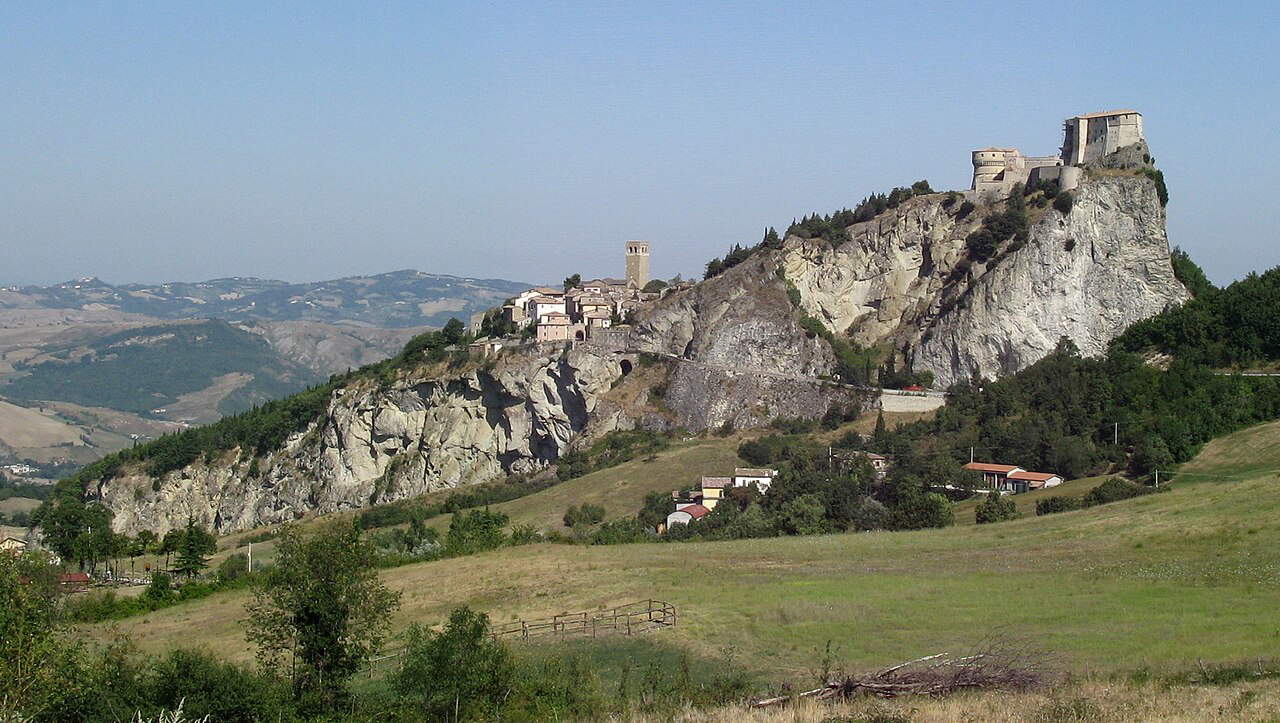
The city of Rimini is the ideal starting point to discover the Malatesta Seignory. Two of the symbols of their power stand here: the Malatesta Temple and Castel Sismondo. The Malatesta Temple is one of the most significant works of the Italian Renaissance, commissioned by Sigismondo Pandolfo Malatesta as a mausoleum for himself and his family. The building, designed by Leon Battista Alberti, is located in the heart of Rimini and represents the culmination of the Malatesta family’s artistic and political aspirations. Its construction began in 1450 but was left unfinished. Inside the temple are numerous masterpieces of art, including Agostino di Duccio’s relief and Sigismondo’s tomb by the famous sculptor, as well as Piero della Francesca ’s famous fresco depicting Sigismondo Malatesta in adoration of St. Sigismondo. The Malatesta Temple is not just a church, but a monument to the greatness of the Malatesta family (in fact, their coats of arms and exploits appear everywhere), which profoundly influenced the Renaissance, and is a shining symbol of Sigismondo Pandolfo Malatesta’s aspirations.
Castel Sismondo, built between 1437 and 1447 at the behest of Sigismondo Pandolfo Malatesta, is one of the architectural masterpieces that mark the heart of Rimini. Designed under the supervision of Filippo Brunelleschi, the castle combined residential and military functions, and is the symbol of Malatesta power. Its majesty is expressed through the crenellated towers, ramparts and moat that surround it, making it one of the most impressive fortresses of the period. The castle was the seat of Sigismondo’s government and court and a nerve center for Rimini’s political and cultural life. After the decline of the Malatesta seigniory, the castle came under the control of the Church and underwent changes over the centuries. Today, it houses the Federico Fellini Museum, dedicated to the famous Rimini director, and offers visitors an experience that blends history, art and cinema.
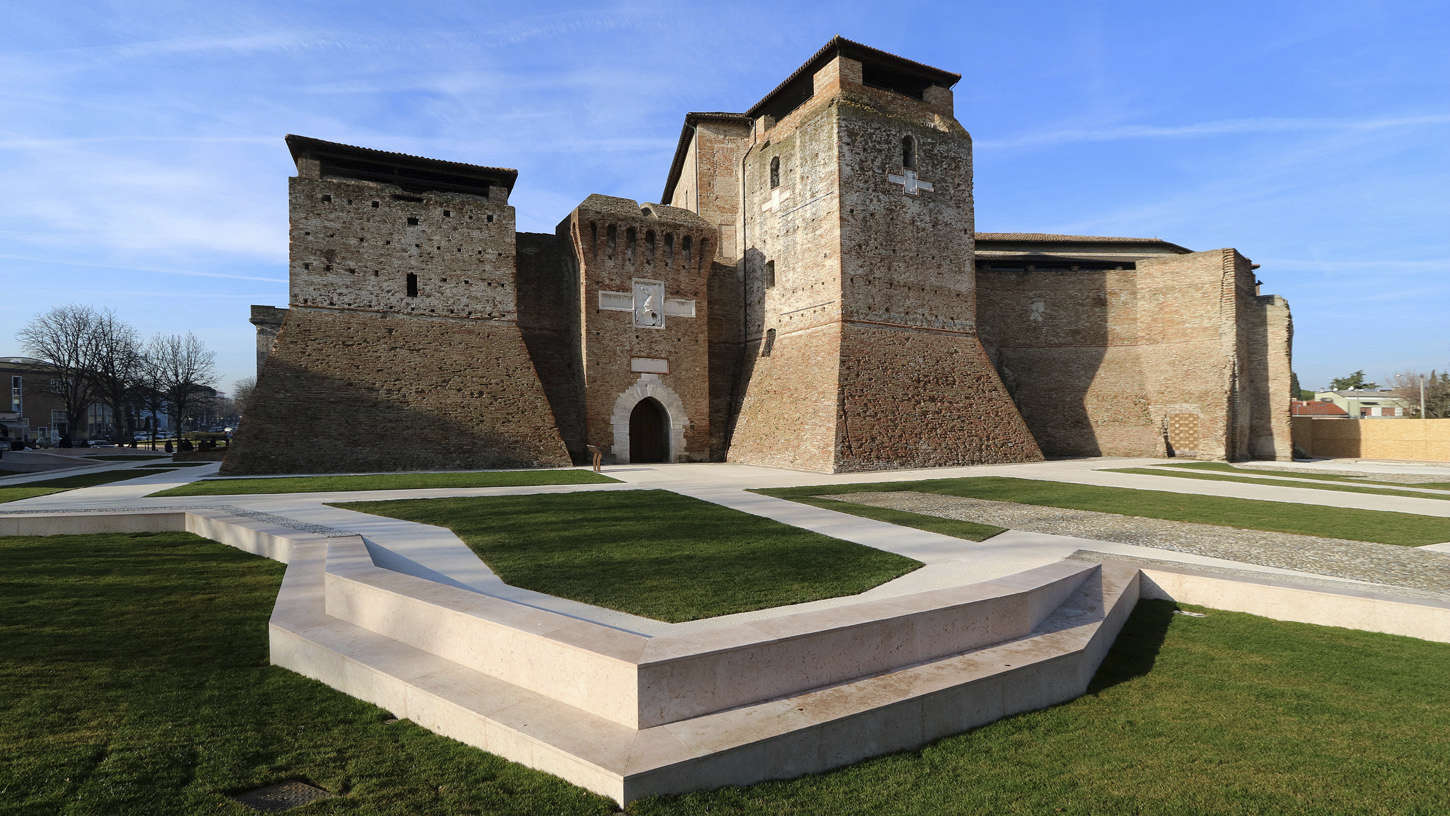
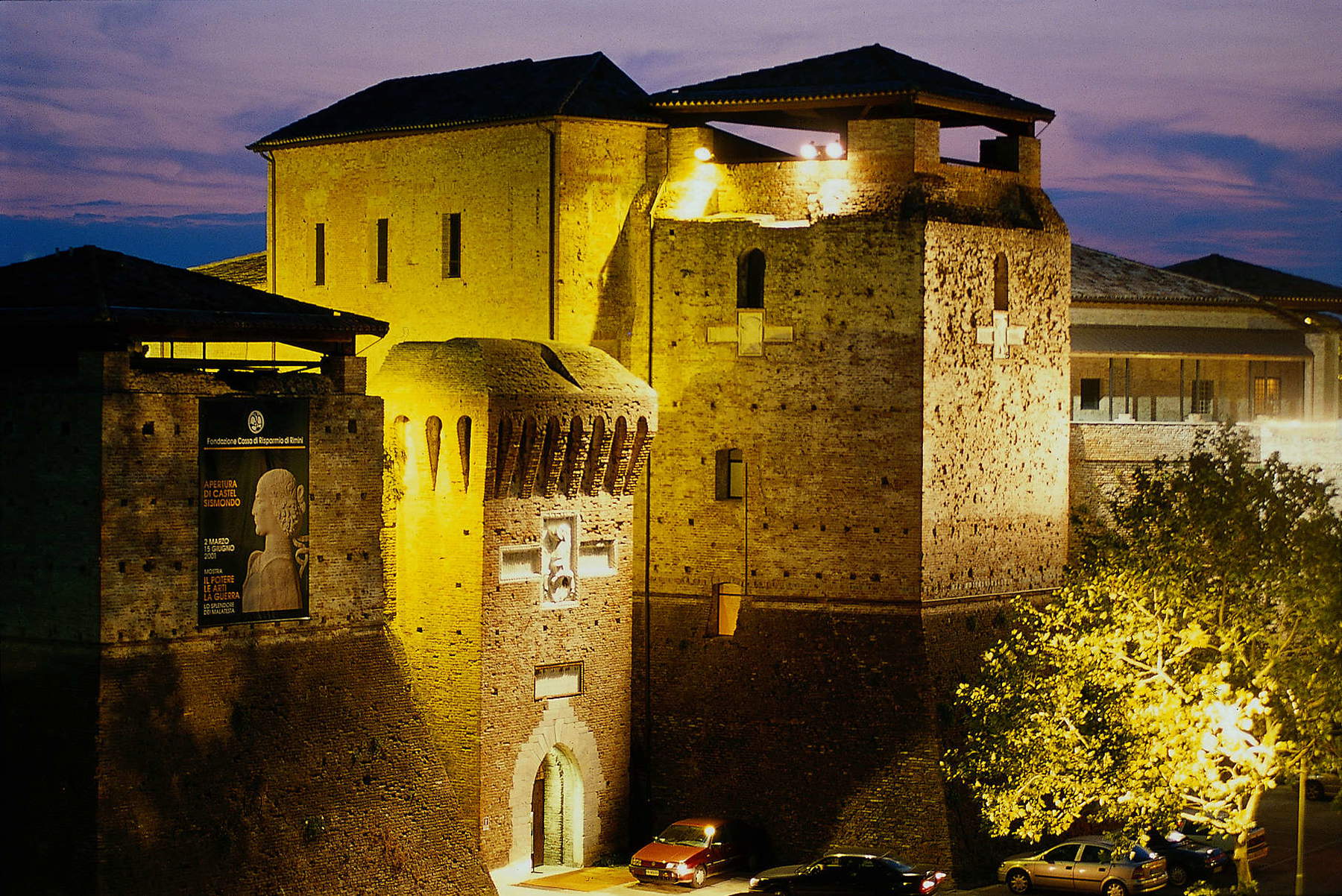
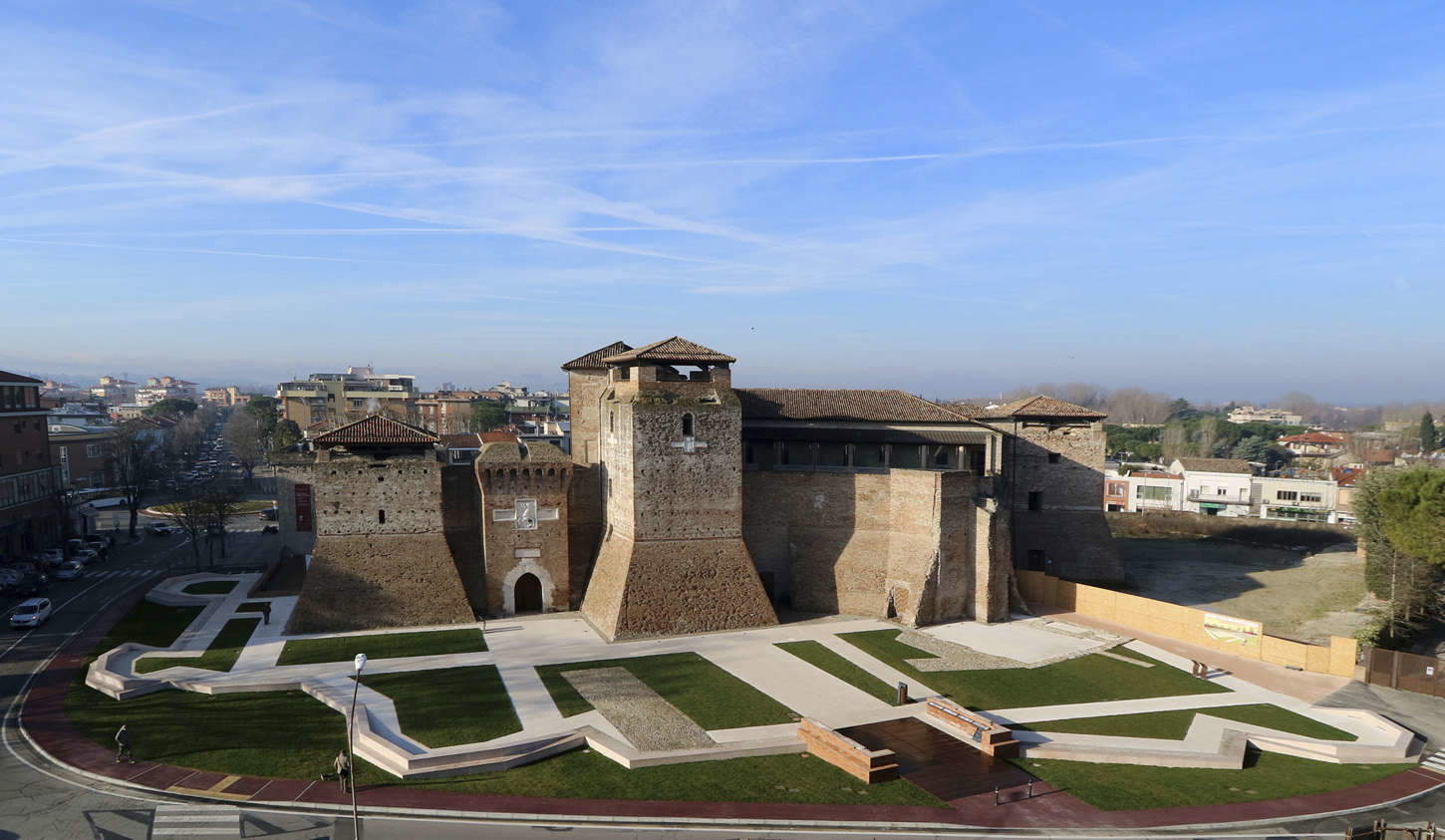
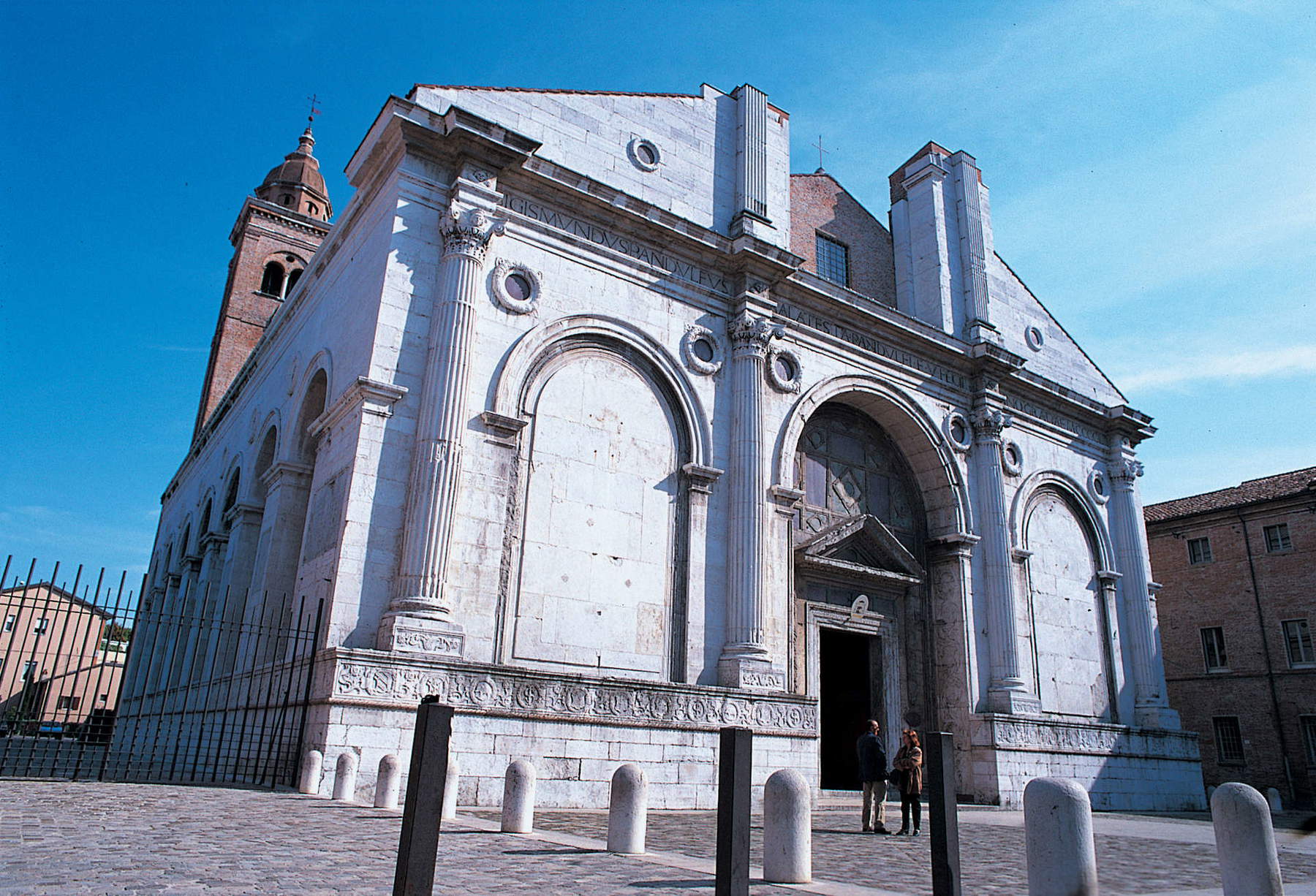
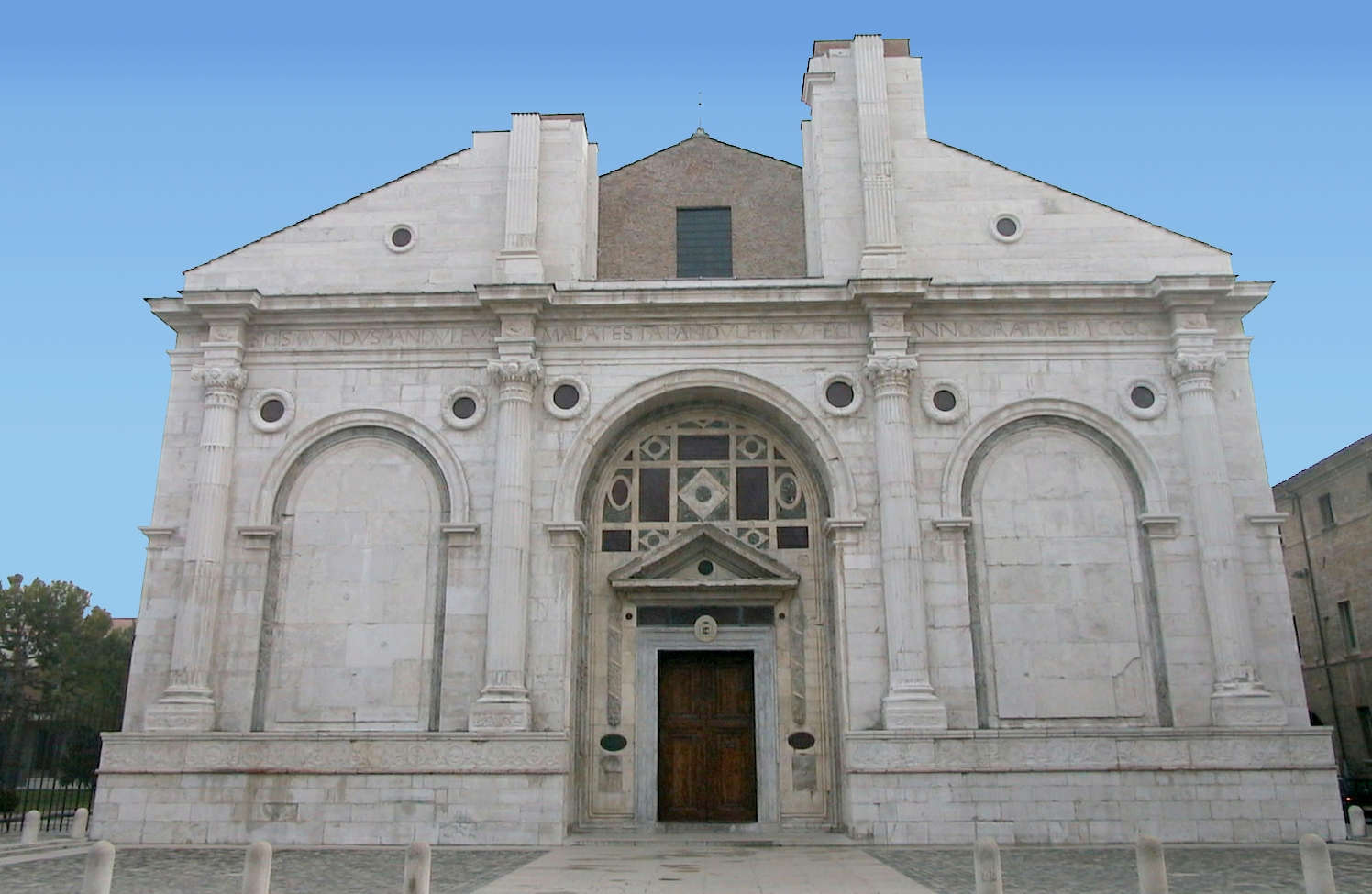
Leaving Rimini, one plunges into the charm of the Rimini hills, dotted with castles and fortresses that tell of battles, intrigue and love. Montefiore Conca stands as one of the most iconic bastions, with medieval frescoes and splendid views of Romagna. The Rocca Malatestiana of Montefiore Conca is one of the most strategic places on the entire route: the fortress was built in 1337 by Malatesta Guastafamiglia, a family member who played an important role in the wars of conquest against neighboring territories. The fortress, which stands on an ancient fortified site, was enlarged and strengthened in the 14th century, mainly through the interventions of Sigismondo Pandolfo Malatesta. The exterior structure is solid and clearly visible from afar, with the characteristic scarp wall that supports the fortress and the elegant Ghibelline battlements that decorate it. Inside are numerous rooms, including a courtyard surrounded by mighty walls and towers, which over the centuries witnessed conflicts and battles between rival lordships. But it is inside the fortress that one can admire the extraordinary 14th-century frescoes commissioned by Galeotto Malatesta, with scenes of war and portraits of heroes of the past. Throughout its long history, the fortress was home to many illustrious figures, including Sigismund of Bohemia, Popes Gregory XII and Julius II, as well as several condottieri linked to the Malatesta family. Its strategic importance made it a focal point for the control of the surrounding lands, while today it represents one of the best preserved and visitable fortresses in Romagna.
Not far from here, the Castle of Coriano was fundamental in the Middle Ages for the control of the territory. It was first mentioned in 1209, when it passed from the Carpegna family to the Church of Ravenna. However, the castle gained greater importance from the 14th century, when in 1356 the curia of Ravenna ceded Castrum Coriliani to the Malatesta Seignory. Over the centuries, the castle underwent numerous extensions and modifications, with the construction of a new wall around the middle of the 15th century. The structure was further fortified under the rule of the Malatesta, who provided the fortress with new bastions and towers, making it one of the strongest fortresses in the region. In 1504, Coriano came under the control of the Venetians, but the occupation was short-lived, and in 1512, after being sacked by Spanish troops who burned part of the walls, the castle was given to various owners, including the Sassatelli family, who maintained it until 1579. Later, the castle changed hands and, in 1672, was damaged by an earthquake. Today, although restored, Coriano Castle retains its medieval appearance, and its walls tell centuries of history. The imposing structure, with its keep and strong defensive walls, is not only a place of great historical interest, but also offers a splendid panoramic view of the surrounding countryside. Today the castle is a symbol of Malatesta power in the area and a must-see for those exploring the medieval history of Romagna.
Equally impressive is the Castle of Montegridolfo, located on the border with the Marche region, which preserves its Malatesta walls and Clock Tower intact. Its construction dates back to the 13th century, when the noble Gridolfi family chose it as their home. However, it was in 1336 that the Malatesta Seignory took over the castle for good, after defeating Count Nolfo da Montefeltro, who had sought to consolidate his power over the area. In 1500, the castle suffered major destruction during one of the clashes between the two rival lordships, but it was promptly rebuilt. With the end of the Malatesta Seigniory and the rise of Montefeltro power, the castle came under the control of Cesare Borgia and, later, the Church. Today, the castle of Montegridolfo stands as one of the most fascinating examples of a medieval fortress. Its sturdy walls, Clock Tower and entrance gates bear witness to its past as a point of defense and strategic control. The castle still retains its medieval charm, and a visit to its interior allows you to immerse yourself in the atmosphere of a time when every corner of the village had a defensive function.
A very short distance from Montegridolfo is Mondaino, whose fortress dominates the landscape with its mighty walls.This castle, which plays a fundamental role in the defense of Malatesta territories, was strengthened and enlarged by Sigismondo Pandolfo Malatesta during his rule. The exterior structure is imposing, with powerful scarp masonry supporting the fortress, and a series of defense towers offering panoramic views of the valley below. The castle was a strategic point for controlling nearby lands and monitoring enemy troop movements. Sigismondo Pandolfo Malatesta expanded the walls, increasing the number of towers from seven to thirteen, making the fortress virtually impenetrable. Federico da Montefeltro, in a letter, described Mondaino as a “strong et important place, which under no pact can be conquered.” Today the Mondaino fortress is an important tourist attraction, and visitors can explore its courtyard, towers and inner halls. One of the rooms also features a 15th-century fresco of the Madonna del Latte by Bernardino Dolci.
The itinerary can then continue to Meleto Castle, located inland from Rimini in the municipality of Saludecio, an imposing example of a Malatesta fortification. With its dominant position over the Tavollo and Foglia valleys, the castle played a role of fundamental importance during the medieval period, when control of these lands was essential for rival seignories. It was first mentioned in 1140, when it was counted among the possessions of the noble Carpegna family. In 1371, the castle was acquired by the Malatesta of Verrucchio, who transformed it into a defensive stronghold. During the 14th and 15th centuries, Meleto became a target of numerous struggles between the lords of the region, including the Montefeltro and the Malatesta. The castle was sacked in the course of the battles and in particular suffered damage during Niccolò Piccinino’s attacks in the 1420s. After the end of the Malatesta Seigniory, Meleto came under the control of the Church and was later incorporated into the Church State.
The itinerary can be completed with a visit to Albereto Castle, which is located in the town of Montescudo, on the border with the Republic of San Marino, in a position that offers a unique panoramic view of the Conca Valley and the Adriatic coast. The fortification has ancient origins, dating back to the 13th century, but the castle we see today was enlarged and strengthened by the Malatesta family during the 14th and 15th centuries, with the addition of higher and sturdier walls, characterized by a moat that once surrounded it. The castle of Albereto was part of the Malatesta defense system, a network of fortresses that stretched across Romagna to protect the territories of the seignory and defend against raids by the Montefeltro and other enemies. The castle was involved in various conflicts, but because of its strategic location, it was able to withstand sieges and maintain its importance in the political landscape of the time. Over the centuries, the castle passed from one noble family to another, and in the 19th century it was partially renovated. Today, Albereto Castle is a popular destination for those who want to immerse themselves in the medieval charm of Romagna, walking within its walls and visiting the rooms that once housed the local nobility.
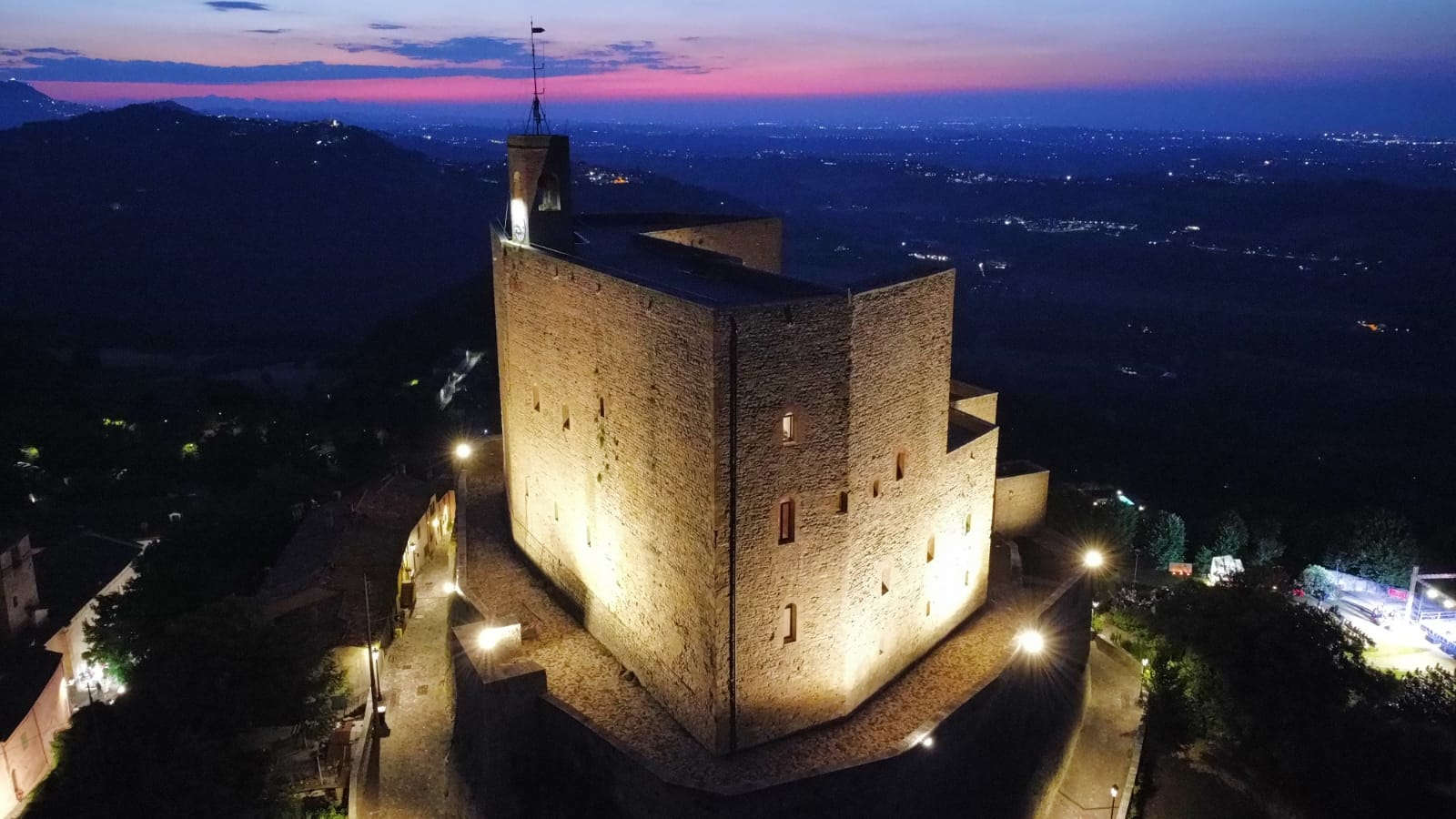
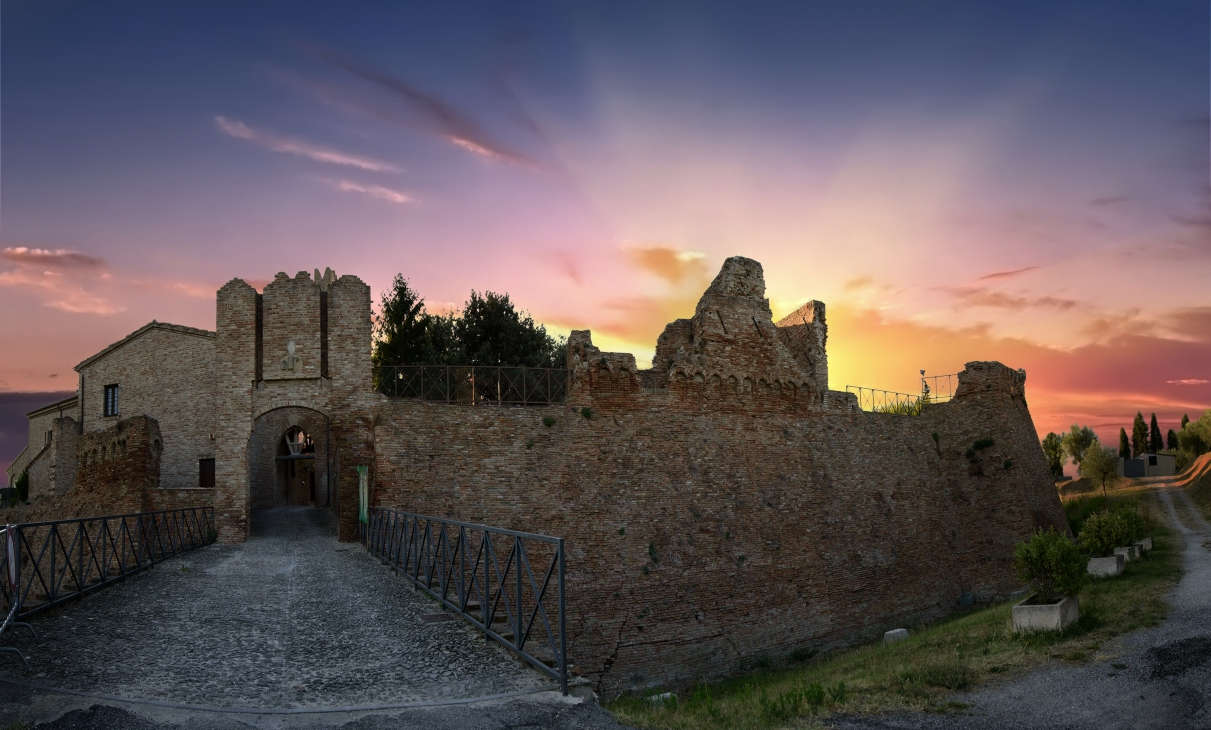
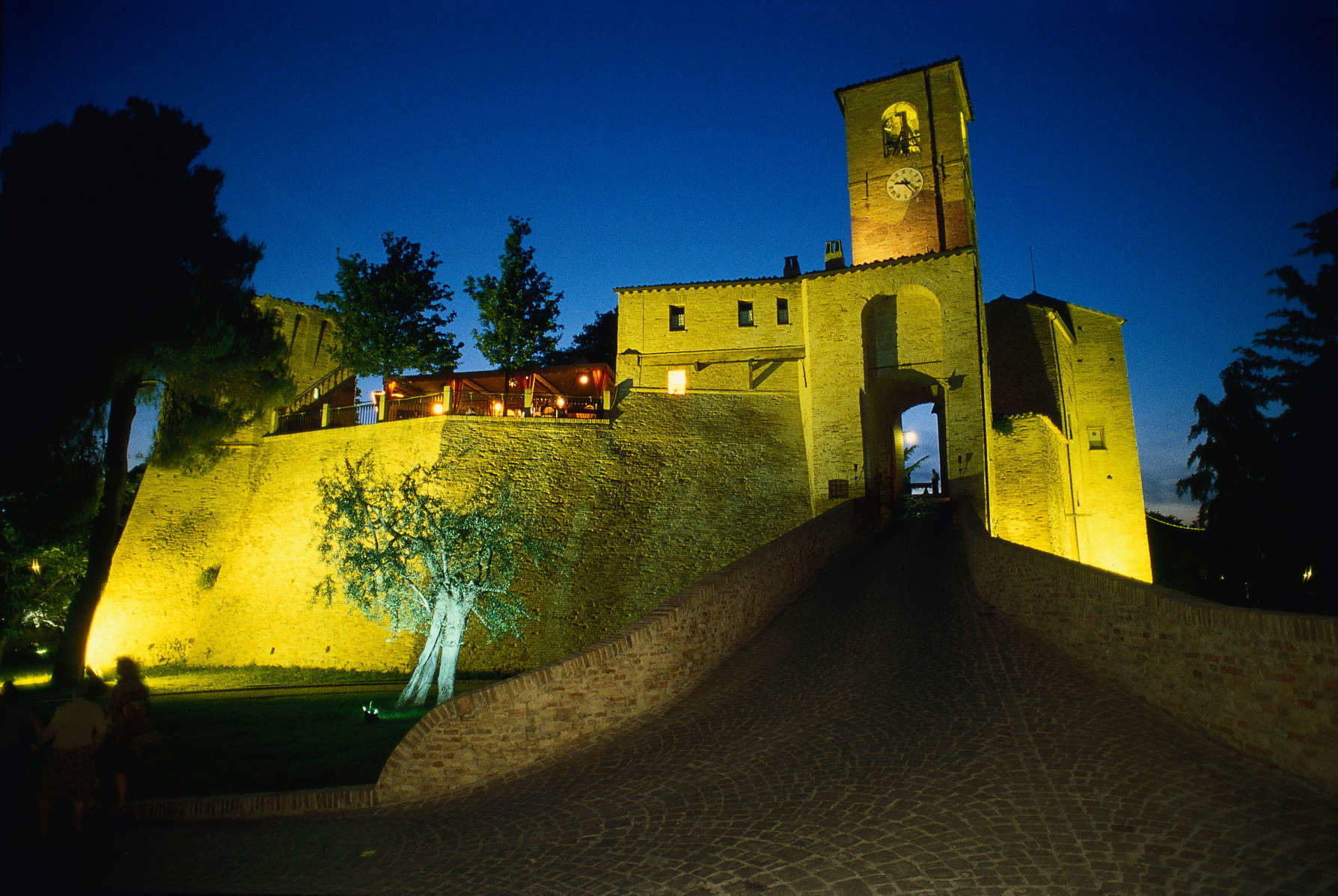
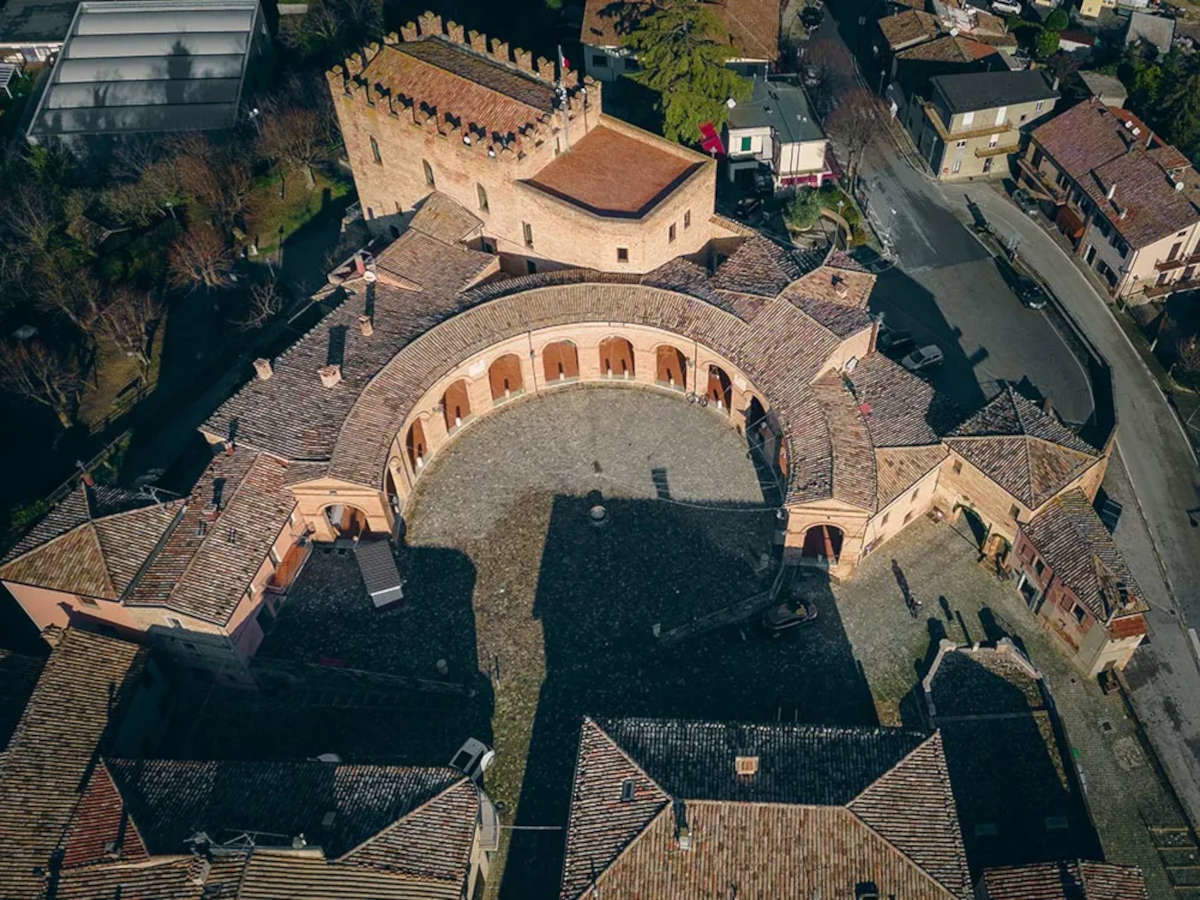
The city of Cesena was another important center of Malatesta power. The Biblioteca Malatestiana, founded by Domenico Malatesta, lord of Cesena, in 1454, is the only example in the world of a perfectly preserved humanist library: an extraordinary testimony to Renaissance intellect and culture. The library is still an important example of humanistic architecture and culture. Its construction was entrusted to Matteo Nuti, a disciple of Leon Battista Alberti, and the library was intended to house the archives of the Franciscan friars. Today the Malatesta Library is a World Heritage Site and an architectural jewel that testifies to the importance of the Malatesta family in spreading culture and knowledge. Visiting the library is an immersion in a time of great transformation, when Cesena became one of the most vibrant centers of Renaissance culture.
On Garampo Hill, on the other hand, stands the Rocca Malatestiana, which fascinated even Leonardo da Vinci with its architectural ingenuity. The Rocca di Cesena is one of the most emblematic places of the Malatesta Seignory and stands on the top of the Garampo Hill, overlooking the city of Cesena. Construction of the castle began in 1380 at the behest of Galeotto Malatesta, who intended to strengthen his control over the city and surrounding lands. The fortress soon became a center of power, the residence of the lords of Cesena and a symbol of Malatesta greatness in the region. The fortress was enlarged and improved by Andrea Malatesta and Malatesta Novello, Galeotto’s successors, and was completed in 1477, the year the Malatesta lordship ceded power to the Church, which took control of the city. The fortress became a symbol of the struggle between the civil power of the Malatesta and ecclesiastical authority, evidenced also by the fact that Cesena and its fortress were for a long time the scene of disputes between the Malatesta and papal representatives. The fortress is distinguished by its majesty and its fortifications, which made it virtually impenetrable. During Leonardo da Vinci ’s stay in Cesena in 1502, the Tuscan genius inspected the fortress’ defenses and drew some reliefs of its walls, which are now preserved at the Library of the French Institute in Paris.
In contrast, theAbbey of Santa Maria del Monte, overlooking Cesena, is a place of peace and spirituality. Founded between 1001 and 1027, the abbey soon became one of the most important religious and cultural centers in the region. Its strategic location, overlooking the city of Cesena, was instrumental in its development as a reference point for pilgrims and the faithful. Over the centuries, the abbey underwent numerous interventions, but it was under the control of the Malatesta family that it experienced some stability and prosperity. In 1177, Emperor Frederick Barbarossa stopped at the abbey on his way to Venice, marking the beginning of a long series of political alliances between the Malatesta and the Church. In 1337, during the war against Cesena, the abbey was besieged by Federico da Montefeltro’s troops, but it was rebuilt over the next few decades, becoming a place of great significance to the Malatesta lordship. Today, the abbey is a place of peace and spirituality, with the crypt housing the relics of St. Pier Damiani. The church, with its Romanesque and Gothic style, and the cloister are evidence of a past rich in religious and cultural history.
The tour can be concluded a short distance from Cesena, at Montiano Castle, whose origins date back to the year 895, when Countess Ingelrada and her son donated it to the Archbishop of Ravenna. Its strategic location, overlooking the ancient Via Emilia, made it a contested target over the centuries. In the 13th and 14th centuries, the castle was involved in numerous conflicts between neighboring towns and came under the control of the Church, which managed it as a direct property. In the 15th century, contention for control of the castle became more bitter, with the entry of the Malatesta family. Montiano Castle thus became a focal point of their expansion. Its defensive position was improved, and during the Renaissance period the castle underwent a series of modifications to adapt to new warfare needs. The castle changed hands several times, from the Church to the Venetians to Cesare Borgia, who occupied the fortress in 1500. With the end of the Malatesta Seigniory and the advent of new masters, Montiano lost some of its importance, but the castle continued to be a fundamental part of local history. Today the castle is one of the most shining witnesses to the region’s medieval past.
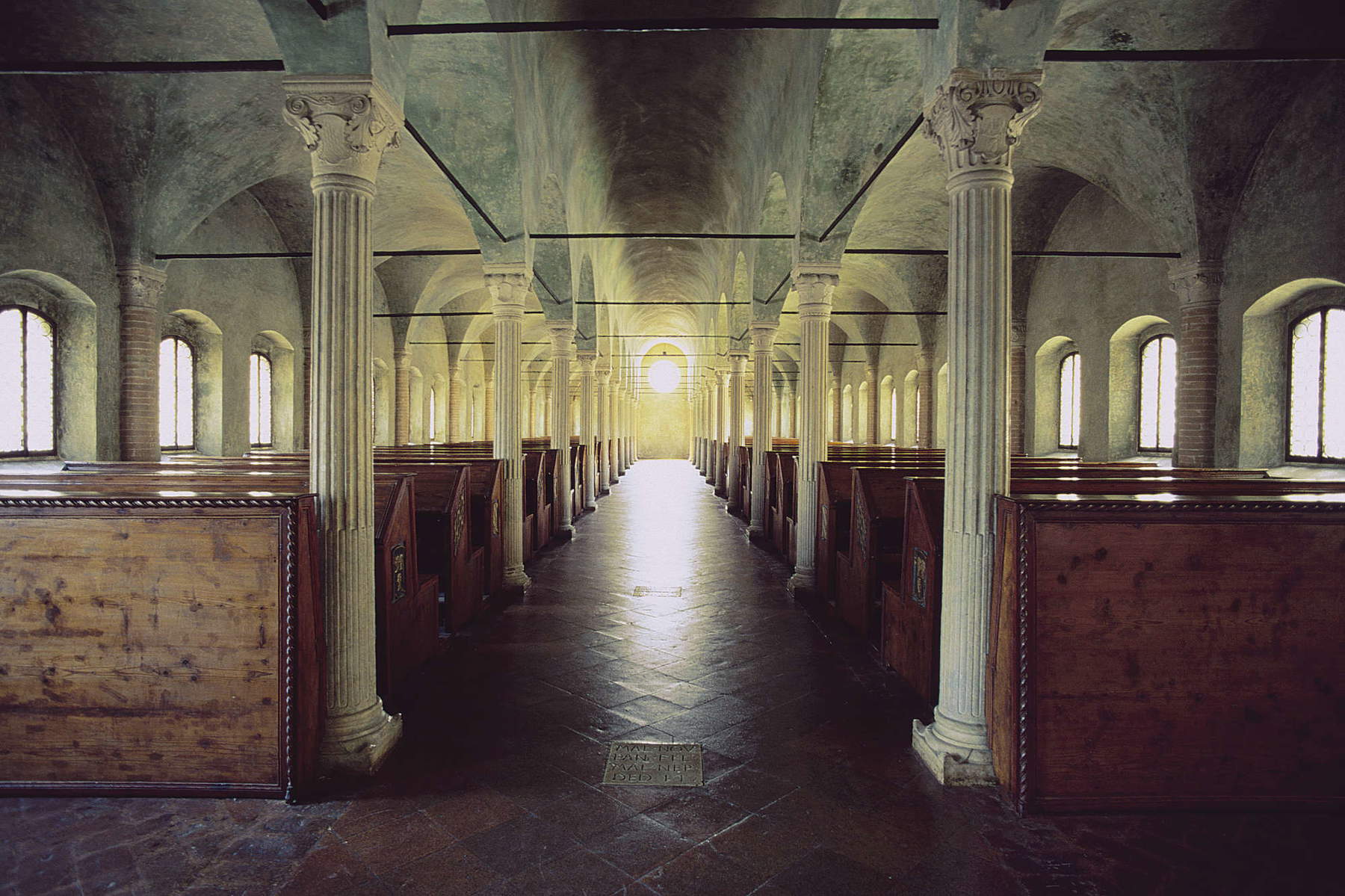
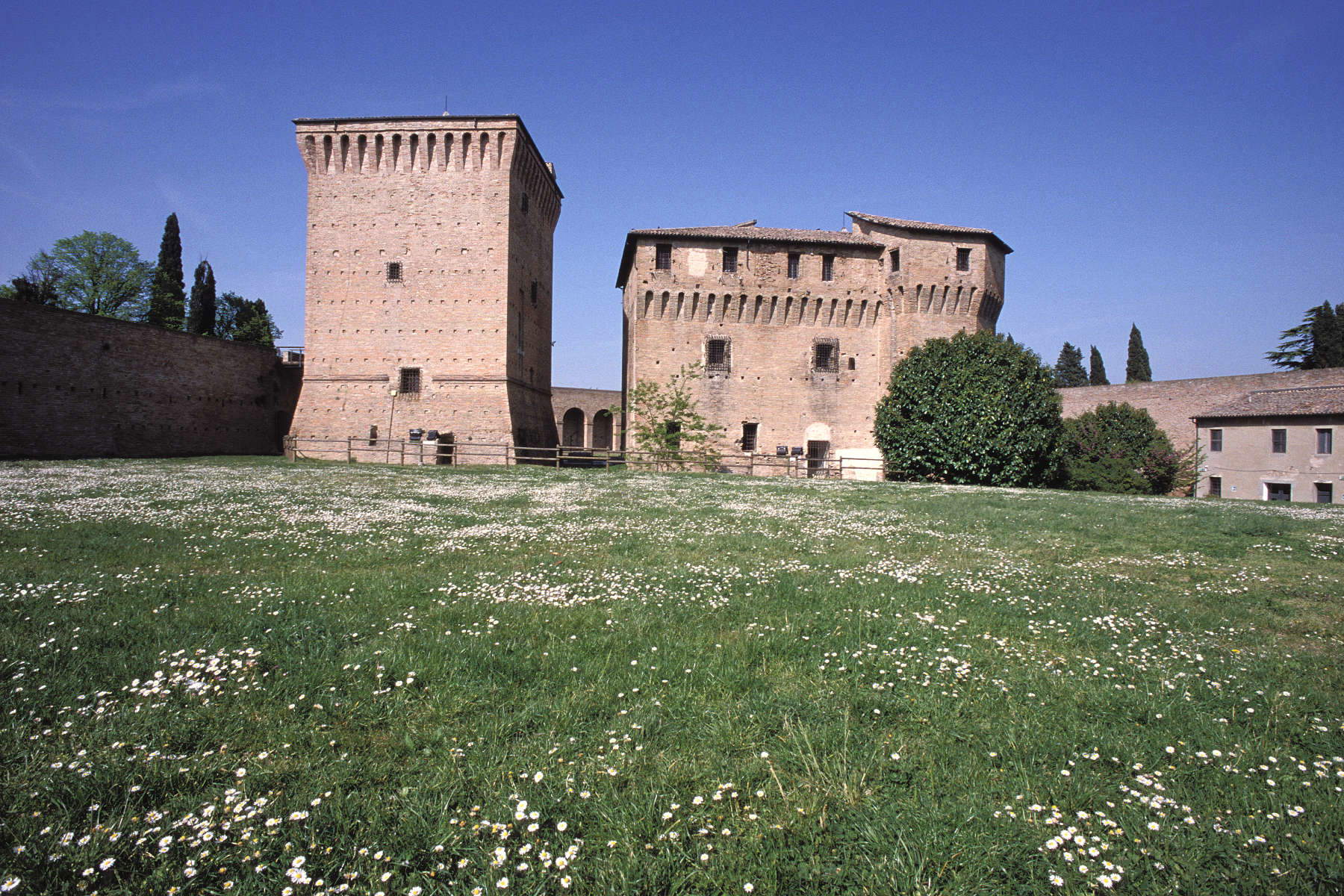
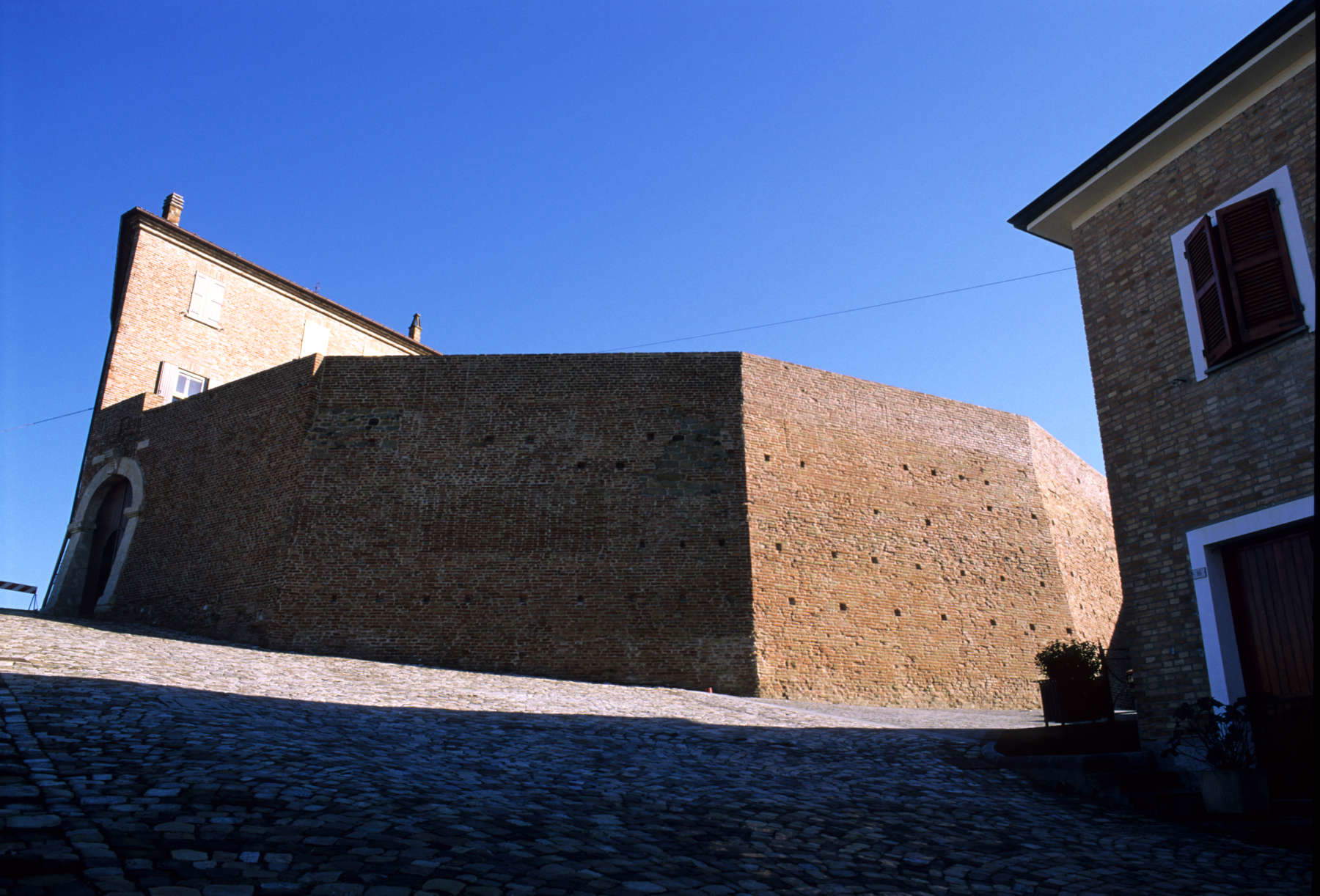
 |
| Journey to discover the Malatesta Castles in the heart of Romagna |
Warning: the translation into English of the original Italian article was created using automatic tools. We undertake to review all articles, but we do not guarantee the total absence of inaccuracies in the translation due to the program. You can find the original by clicking on the ITA button. If you find any mistake,please contact us.